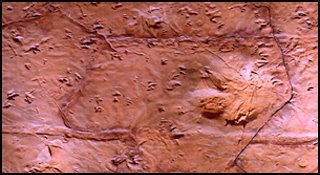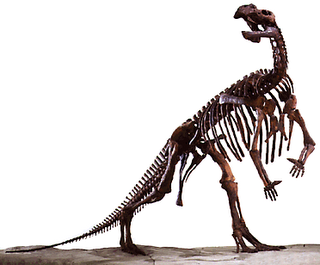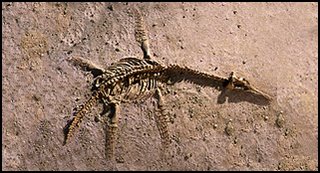
Discovered in the 1960s and excavated by the Queensland Museum and the Australian Army, the Lark Quarry dinosaur trackway is the best example of dinosaur tracks in the world. It is located 110km SW of Winton. Here, now exposed in a small quarry, are thousands of dinosaur footprints recording the events of a few moments in time 95 million years ago. Over 3000 footprints, made by nearly 200 individual dinosaurs, were found at the site. Three main types of dinosaur track are present: a small track from a coelurosaur, which was about 13-22cm at the hip and a large group of tracks from orithopod dinosaurs which were between 12-70cm at the hip. The third type of footprint was a large flesh-eating dinosaur which left footprints nearly 60cm long. It would have been about 2.6 m at the hip, a very large dinosaur indeed.

Named after the town of Muttaburra in central Queensland, Muttaburrasaurus langdoni was discovered by local grazier Doug Langdon, for whom the dinosaur is named. Muttaburrasaurus lived around 100 million years ago, during the Cretaceous period. It was a herbivore, with rows of grinding teeth. Several specimens of this dinosaur have been found in central and northern Queensland, and a few teeth have been found in New South Wales. Muttaburrasaurus was about 7m long, and probably ate plants such as ferns, cycads and conifers. It may have lived in herds.

The complete, articulated (joined-together) skeleton of this animal (not a dinosaur) was found in 1990 near the town of Richmond, north-western Queensland. It is one of the best, most complete skeletons of its type in the world. The animal is as yet un-named, but scientists are currently working to fully understand and describe it. It belongs to the pliosauroid group, and was nearly 5m long. It is probably a member of the polycotylid family, a specialised pliosuaroid from the Early Cretaceous period. It had a relatively short neck, and a powerful set of flippers and a tail. It lived in the inland sea in Queensland 100 million years ago.
After the dinosaurs died out, nearly 65 million years passed before people appeared on Earth. However, small mammals (including shrew-sized primates) were alive at the time of the dinosaurs. Many scientists who study dinosaurs (vertebrate paleontologists) now think that birds are direct descendants of one line of carnivorous dinosaurs, and some consider that they in fact represent modern living dinosaurs. This theory remains under discussion and shows that there is still much we don't know about dinosaurs.





